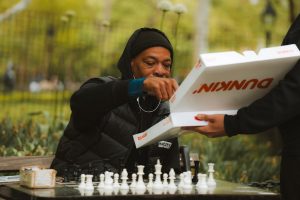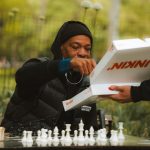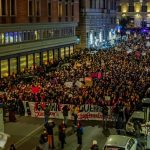Stepping into Marcus Garvey Park in 2025, it’s not just a patch of green in Harlem; it’s a whole vibe. You know, a place where history whispers through the trees and the city’s pulse really beats strong. People call it Mount Morris Park sometimes, still, but the name Marcus Garvey kinda fits better, doesn’t it? Especially up here, high above the streets, you get a view of everything happening in one of New York’s most famous neighborhoods. It’s got this feel to it, a blend of calm and constant activity, that you just don’t find everywhere.
This isn’t your typical park, not with that crazy, old iron fire watchtower sticking up right in the middle. And honestly, it feels like this park is almost alive, with how much it’s changed, but also how much it’s stayed the same, really holding onto its roots. It’s a spot locals cherish, and anyone visiting Harlem should swing by, no question. There’s just a certain energy here, a sense of community that’s pretty cool to see firsthand.
A Hill with Stories: The Park’s Past, Present, and Future Feel
You gotta understand, this park isn’t just some random hill someone decided to stick swings on. It’s always been important. Way back, before it was even a park, this place was a lookout spot, a signal point. And then, as Harlem started really coming into its own, this hill became the park. Its official name got changed to Marcus Garvey Park in the 1970s, honoring the huge Black nationalist leader who, well, he organized some massive parades and stuff right here in Harlem during the early 20th century. That feels right, seeing as Harlem itself has such deep connections to Black history and culture. You can almost feel that echo when you walk around. What’s interesting is how it’s not just a static monument; it’s a living part of the neighborhood, adapting but remembering.
So, when you visit today, you’re walking on ground that’s seen a lot. Seen civil rights rallies, seen kids playing baseball for generations, seen jazz musicians jamming in the summer. It’s got layers. And standing there, looking down at the brownstones and the hustle, you kinda get why it means so much to the folks who live nearby. It’s their backyard, their stage, their quiet spot all rolled into one. I reckon that sense of ownership, that deep connection, is what keeps it so vibrant, even after all these years.
The Watchtower: Not Just a Pretty Face
Let’s talk about the big deal here: the Mount Morris Fire Watchtower. This isn’t just some old landmark; it’s the last of its kind in New York City. Think about that for a second. Built way back in the 1850s, it used to be where guys would spot fires across the whole city. Imagine the job, sitting up there, eyes peeled, waiting for smoke. It’s a serious piece of history. And it’s made of cast iron, which is wild, right? It looks almost like a giant, super tall birdcage or something, but it’s sturdy. Really sturdy.
The watchtower went through a lot, almost got torn down a few times. But people fought for it. They really wanted to keep it. And good thing they did, because it’s not just cool to look at; it’s a symbol. It stands for perseverance, for history not being forgotten, even in a city that’s constantly tearing down and building up. Getting it fixed up, that took some serious effort and money, but it was worth it. Now, it stands tall, watching over Harlem just like it used to, though obviously, nobody’s looking for fires from up there anymore. It’s a testament to preserving unique pieces of the past. Climbing it? Not usually open to the public, sadly, but just knowing it’s there, seeing it from different angles as you walk through the park, that’s enough. It makes the park special, no doubt.
Community and Culture: The Heartbeat of the Park
Marcus Garvey Park isn’t just about old buildings; it’s about people. It really is. The park is a central spot for Harlem’s community, a real gathering place. Especially during the warmer months, this place buzzes. You’ve got the Richard Rodgers Amphitheater, right there in the park, and that’s where some magic happens. Think free concerts, outdoor plays, dance performances – a lot of them with a focus on Black artists and stories. It’s pretty special, getting to see top-notch talent under the sky, surrounded by your neighbors. And it’s all usually free, which is a big deal for everyone.
I’ve seen some incredible stuff there, honestly. Music that makes you want to dance, plays that make you think. It’s a place where artists can connect directly with the community, and where the community can just chill and enjoy some culture without breaking the bank. It really pulls people together. But it’s not just the big events. You’ll see fitness classes happening on the grass, kids learning to ride bikes, folks playing chess on benches. It’s this constant, low-key hum of daily life mixed with moments of real celebration.
And for the kids, there are playgrounds, of course. Lots of running space. It’s a safe spot where families can hang out, which is pretty vital in a city like New York. The little ones get to burn off some energy, and parents can relax a bit. It’s not fancy, but it’s real, it’s needed. The feeling of community here, it’s palpable.
Seasonal Splendor and Local Life
Each season brings something new to Marcus Garvey Park. In spring, when the flowers start popping up and the trees get their leaves back, it just feels fresh. Summer, like I said, is all about the amphitheater and picnics. The air is thick with music and laughter. Fall brings those amazing colors, all reds and oranges, and the park gets a little quieter, a good spot for a thoughtful walk. Even in winter, when it’s cold and sometimes snows, the watchtower standing against a clear, crisp sky looks pretty majestic.
This natural cycle, it kind of mirrors life in Harlem itself. Always changing, always something new, but with a deep, steady rhythm underneath it all. And you’ll find locals using the park every day, no matter the weather. Walking their dogs, jogging up the pathways (and they are steep, let me tell you!), just sitting on a bench watching the world go by. It’s not just a tourist spot; it’s a living, breathing part of their everyday. It truly belongs to the neighborhood.
The energy, the way people move through it, it’s not forced. It just is. You might see a group of older gentlemen playing dominoes, totally absorbed, while nearby, a young artist sketches the watchtower. Maybe a street vendor selling fresh fruit. It’s all part of the unique fabric of the park. And you can tell, everyone here feels comfortable, feels at home. It’s a slice of authentic New York City life, the kind you might not find in the super polished tourist guides.
Visiting Marcus Garvey Park in 2025: What to Expect
So, if you’re thinking about heading to Marcus Garvey Park this year or next, what’s the deal? First off, it’s super easy to get to. Harlem’s got plenty of subway lines, and most of them stop pretty close to the park. The 2, 3, A, B, C, D lines are all good bets. Once you’re there, just wander. No strict path you have to follow.
Wear comfortable shoes, definitely. There are some hills, some steps. If you want to check out the events, especially in summer, look up the Harlem Arts Alliance or NYC Parks Department websites. They’ll have schedules. And bring a blanket if you want to sprawl out on the grass for a concert. Maybe some snacks, too. There aren’t a ton of food vendors right in the park, but Harlem itself is famous for its food, so you can grab something delicious nearby before or after.
Don’t expect it to be perfectly manicured like some huge Central Park sections. It has a more rugged, lived-in feel, which, in my opinion, makes it more charming. It’s not pristine; it’s real. That’s what’s cool about it. You might even catch a pickup basketball game, or some folks doing a drum circle. It’s got that spontaneous, unplanned beauty that makes city life so interesting. You won’t find a smoother place to experience some local culture.
Why It Matters Beyond the Green Space
Beyond the concerts and the old tower, Marcus Garvey Park plays a really important role. It’s a green lung in a dense urban area. Folks need places like this to breathe, to unwind. It’s a place for quiet reflection, too, when the big events aren’t happening. Just sitting on a bench, looking at the city lights in the distance – it makes you think.
It also stands as a reminder. A reminder of the rich history of Harlem, of the struggles and triumphs of Black Americans, and of the power of community. It’s not just a park; it’s a marker. A living museum, in a way, but one that’s still very much part of today and moving forward. I believe its very existence, its continued vibrancy, sends a message about resilience. And that’s a powerful thing.
It holds generations of memories for families in Harlem. You’ll find people whose grandparents played there, and now their kids are on the same swings. That kind of continuity, that’s rare and precious. So, yeah, when you step onto that hill, know you’re stepping into something big, something meaningful. It’s more than just a place to walk your dog; it’s a piece of Harlem’s soul, right there for everyone to see and feel.
FAQs About Marcus Garvey Park in 2025
Q1: Is Marcus Garvey Park safe to visit, especially for tourists?
Absolutely. It’s a well-used city park. During the day, it’s bustling with families, joggers, and people just hanging out. Like any urban park, it’s smart to be aware of your surroundings, but generally, it’s a very welcoming and safe place to spend time. Evenings during events are usually quite busy and friendly.
Q2: Can I climb the Mount Morris Fire Watchtower?
Sadly, no, not usually. The watchtower is a historic structure and isn’t typically open for public climbs due to preservation efforts and safety. You can admire it from below, though, and it’s quite impressive.
Q3: What kind of events happen at the Richard Rodgers Amphitheater?
All sorts of things! Especially in the warmer months (late spring through early fall), you’ll find free concerts, dance performances, theater productions, and community festivals. Many events highlight local Harlem artists and Black cultural contributions. Checking the NYC Parks Department website or local Harlem arts organizations is the best way to see a current schedule.
Q4: Is there a fee to enter Marcus Garvey Park?
Nope, no fee at all. It’s a public park, open to everyone, free of charge. This includes most of the events held at the amphitheater, which are often free as well.
Q5: What’s the best way to get to Marcus Garvey Park by subway?
The park is super accessible. The 2 and 3 express trains stop at 125th Street and Lenox Avenue (Malcolm X Blvd), which is just a block or two away. The A, B, C, and D trains also stop at 125th Street, a little further west, but still an easy walk.










